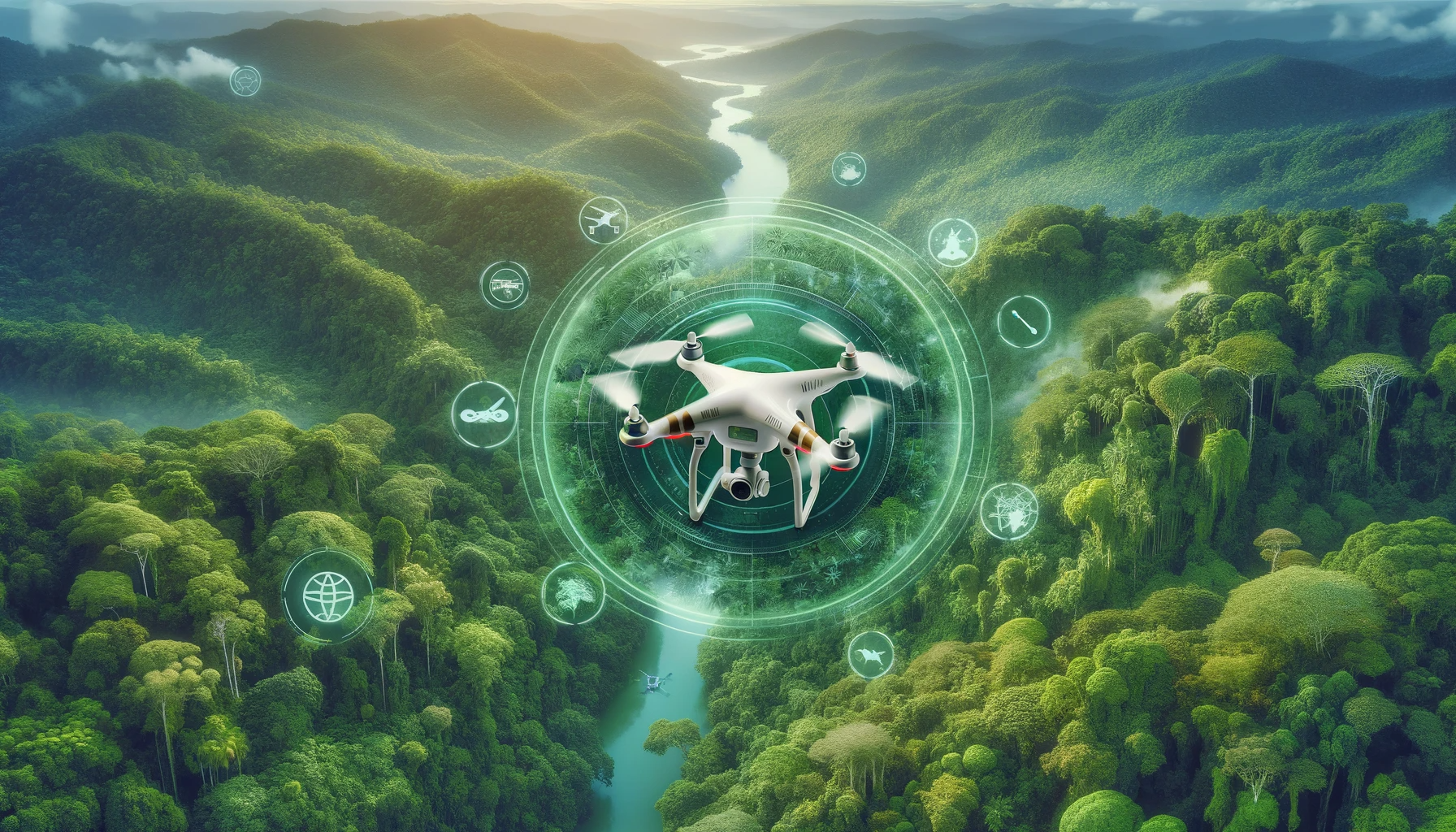In a paper published in the journal Nature, researchers highlighted the growing prominence of artificial intelligence (AI) in biodiversity preservation and monitoring. As the world faced the critical challenge of protecting endangered species and achieving the United Nations (UN)’s ambitious conservation goals, AI emerged as a powerful tool. Its unique ability to rapidly process vast real-world datasets sets it apart from traditional methods, offering an efficient and non-disruptive approach to safeguarding biodiversity.
 Study: AI Revolutionizes Biodiversity Conservation and Monitoring. Image credit: Generated using DALL.E.3
Study: AI Revolutionizes Biodiversity Conservation and Monitoring. Image credit: Generated using DALL.E.3
While experts acknowledged the imperfections of AI, they emphasized the importance of humans actively participating in AI model design, data collection, quality assurance, and data interpretation. With species vanishing at an alarming rate and the UN's target to protect 30% of the Earth's land and oceans by the decade's end, AI has assumed a pivotal role in conservation efforts.
Biodiversity Revolution: AI in Tropical Forest Monitoring
A team of researchers, led by ecologist Jörg Müller from the University of Würzburg in Germany, has delved into AI to aid in quantifying biodiversity in tropical forests. Their groundbreaking study explores how AI can identify animal species through audio recordings, offering a novel approach to monitoring and preserving biodiversity.
The researchers focused their efforts on the Chocó region in Ecuador, celebrated for its vibrant species diversity. To assess biodiversity in this region, they deployed audio recorders in 43 distinct land plots, each representing various stages of environmental recovery. These stages ranged from pristine, untouched forests to areas that had experienced deforestation, been abandoned, and had begun the process of regrowth, as well as deforested land currently in use for cacao plantations and pasture.
Traditionally, experts relied on human auditory skills to identify and catalog the animal species present in these habitats. In this study, researchers initially provided human experts with the audio files. The team successfully identified 183 bird species, 41 amphibian species, and three mammalian species from the audio recordings.
What distinguishes this study from others is the incorporation of AI, particularly a convolutional neural network (CNN) previously designed for bird sound recognition. This CNN was introduced to the recordings and tasked with identifying bird species based on the audio data. Remarkably, the AI model successfully identified 75 bird species previously recognized by the experts.
However, researchers must emphasize that the dataset used to train the AI model was limited to only 77 bird species that might be in the Chocó region. This limitation underscores the need for further training and the collection of more extensive and diverse datasets.
As Müller points out, "The results demonstrate that AI is ready for more comprehensive species identification in the tropics from sound. All that is needed now is more training data collected by humans."
The potential applications of AI in biodiversity monitoring are promising. In particular, AI could revolutionize the ability to precisely measure the biodiversity of regenerated or restored forests, allowing for more accurate and efficient evaluation of biodiversity projects. These projects often seek funding based on their demonstrated success in restoring and preserving biodiversity. AI's capacity to rapidly and accurately assess species diversity from audio data could prove invaluable, marking a significant step forward in conservation efforts.
AI Transforms Wildlife Conservation
Researchers at Conservation AI harnessed AI models capable of sifting through camera-trap footage and drone images to identify wildlife, including critically endangered species, and monitor their movements. They have established a free online platform that automatically analyzes images, videos, and audio files, including real-time camera-trap footage and other sensor data uploaded by approved users. The platform, which has processed over 12.5 million images and detected over four million individual animal appearances, is a game-changer for conservationists. AI can process tens of thousands of images per hour, considerably faster than humans. This rapid data processing can help protect vulnerable species from imminent threats like poaching and fires, as evidenced by the real-time capture of a pangolin poacher in action.
Furthermore, AI is not limited to real-time monitoring. It can also model the ecological impact of human activities and reconstruct historical changes. In a study published in eLife, researchers utilized AI to understand how a century of environmental degradation in a freshwater ecosystem led to biodiversity loss. By analyzing genetic material in sediment layers dating back a century and combining it with climate and pollution data, the researchers found that insecticides, fungicides, extreme-temperature events, and precipitation could account for up to 90% of biodiversity loss in a lake. This AI-based approach offers valuable insights into past drivers of biodiversity loss.
AI's strength lies in its hypothesis-free, data-driven nature. It learns from historical data and predicts future biodiversity trends with unprecedented accuracy. While AI holds great promise for real-world conservation, there are concerns about its environmental impact. The energy and material resources AI consumes should be central to risk management considerations. This promising integration of AI into biodiversity conservation efforts signals a brighter future for safeguarding the planet's ecosystems and species, with the potential for a more efficient, data-driven approach to conservation.
Conclusion
In summary, AI is revolutionizing wildlife monitoring and biodiversity preservation by providing real-time analysis of images and sounds, protecting endangered species from immediate threats, and offering valuable insights into historical changes. However, addressing environmental concerns is crucial due to the substantial resources consumed by AI. Nonetheless, AI's integration into conservation efforts holds great promise for a more efficient and data-driven approach to safeguarding ecosystems and species.